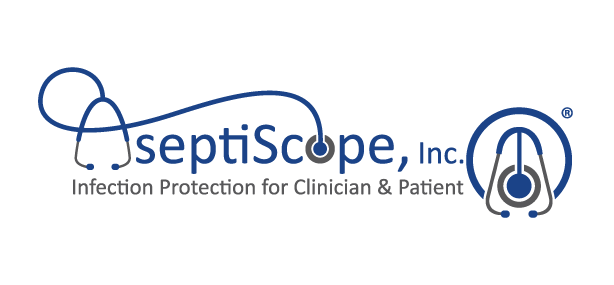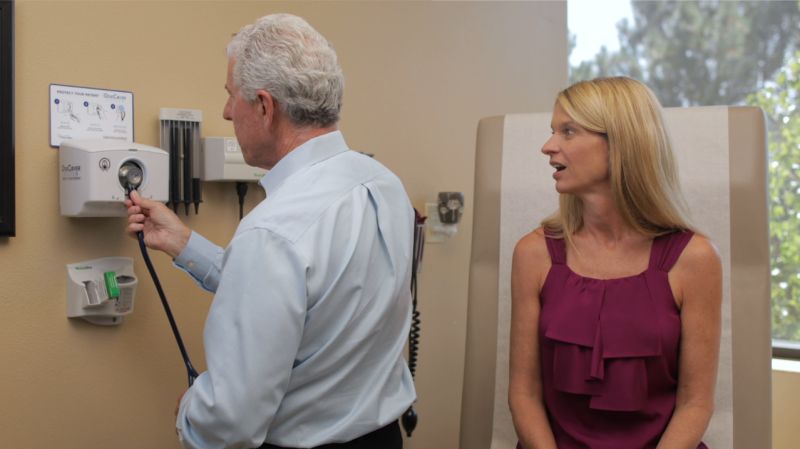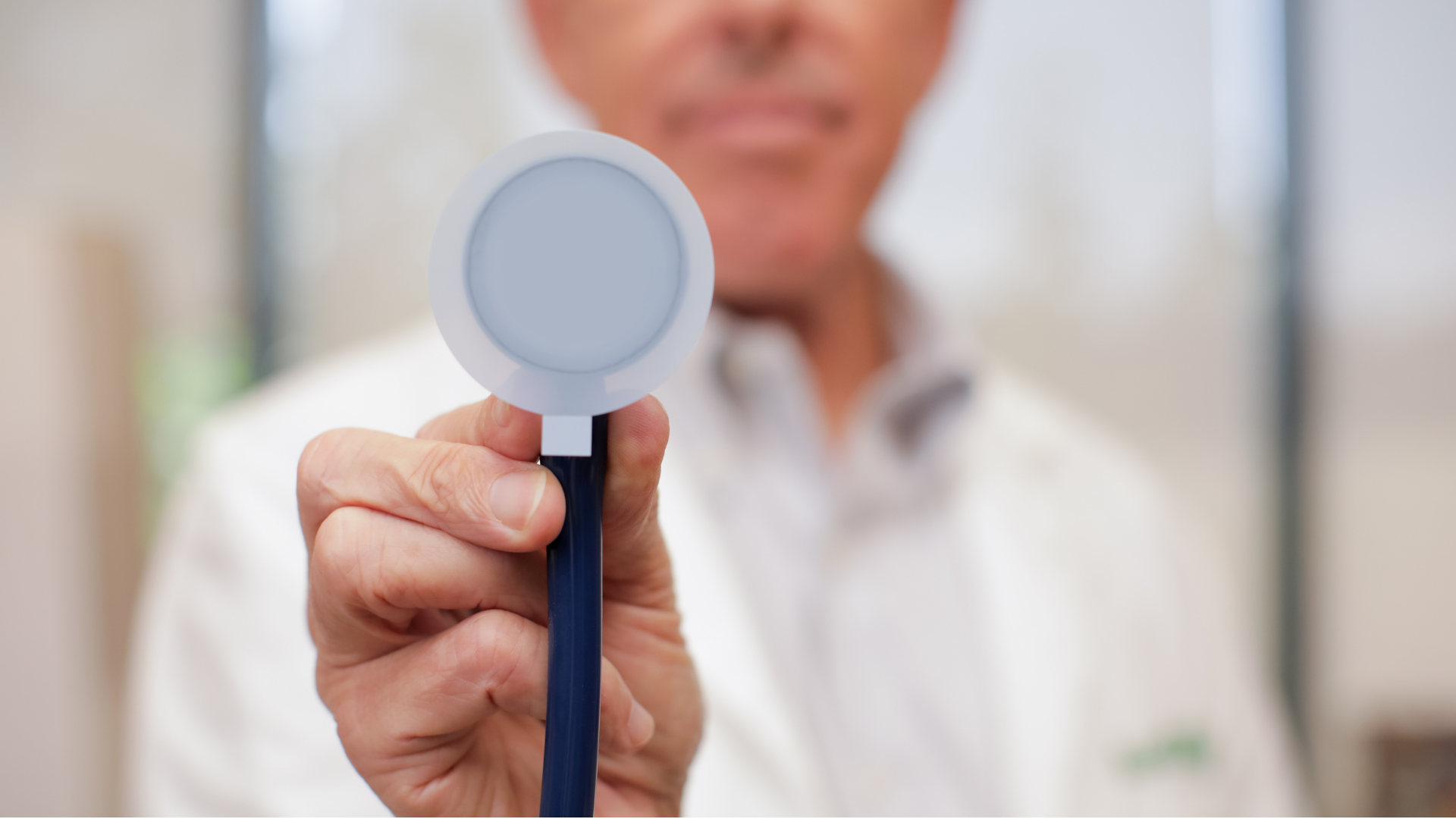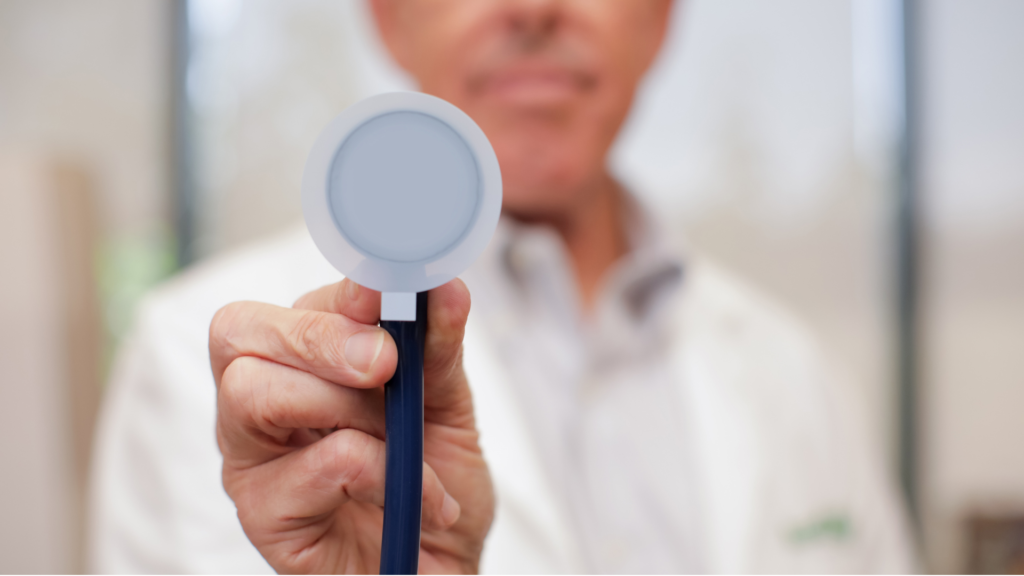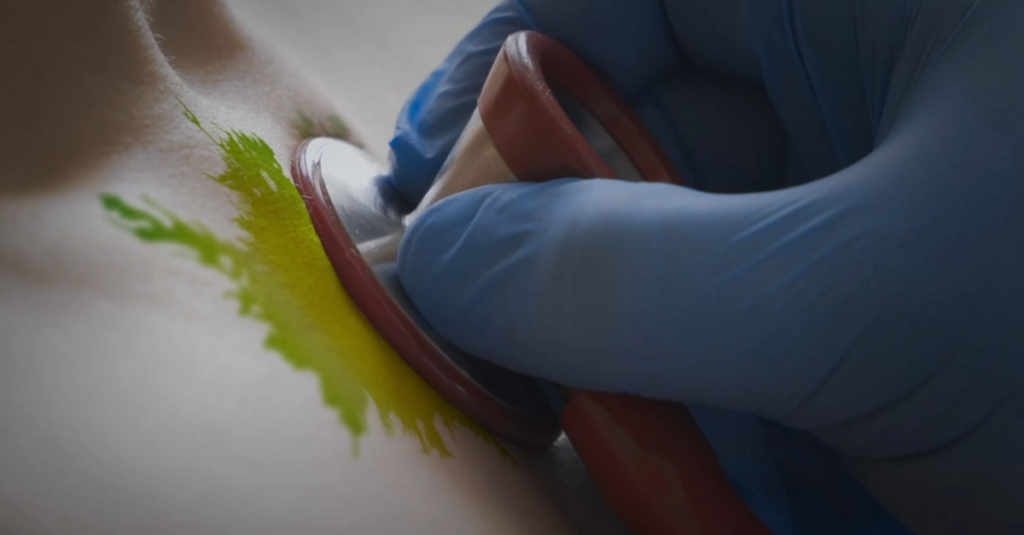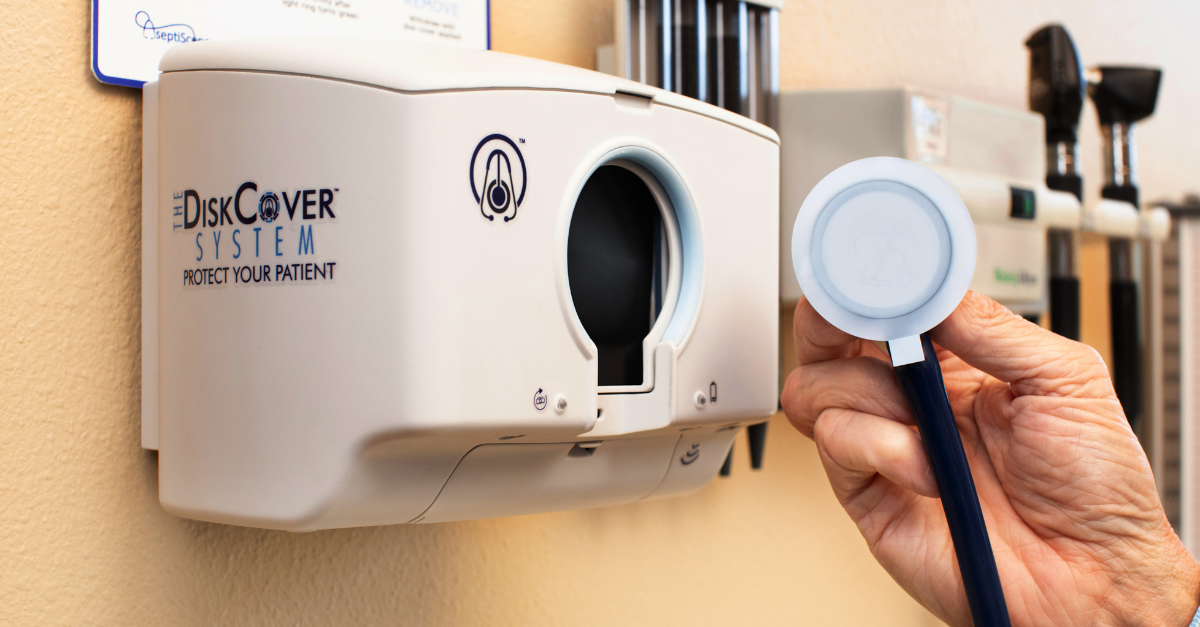
Published by AseptiScope®
SAN DIEGO, Sep. 20, 2024
Amid increased patient concerns about hospitals ‘cleanliness’, as well as newly proposed 2024 stethoscope hygiene guidelines by the CDC, Cleveland Clinic researchers explored patient and provider preferences for various stethoscope hygiene methods. It turns out that patients and caregivers alike are concerned about stethoscope contamination, and patients rarely witness stethoscopes cleaning prior to the exam. This new study, titled “Patients and Healthcare Professionals’ Perceptions of Stethoscope Barriers” published today in the Online Journal of Issues in Nursing (OJIN), reveals new concerns for patient safety, and a common preference for a new solution; the touch-free DiskCover® System.
Stethoscopes are now recognized as highly contaminated vectors that, just like the hands, share pathogens between each patient examination. In fact, stethoscopes are often referred to as the clinician’s “third hand” for their contamination levels and frequency of touching patients. Ostensibly, this means that stethoscope may be undermining all efforts of hand hygiene in healthcare. With stethoscopes touching US patients over five billion times a year, it is conceivable that this vital medical device may be undermining infection control protocols everywhere. Touch-free, aseptic, stethoscope “disk cover” barriers are an established technology, with excellent clinical acceptance validated by multiple healthcare facilities in a broad range of clinical focuses across the nation. The study carried out by the Cleveland Clinic’s Nursing Innovation team aimed to find out patient perceptions of this novel solution to stethoscope hygiene.
This cross sectional study, surveyed 240 Cleveland Clinic patients and healthcare professionals who witnessed various methods for stethoscope hygiene.
Key findings indicate that patients rarely observe healthcare providers disinfecting their stethoscopes, with only 5% witnessing regular cleaning. The patient surveys also revealed:
- They believe clean stethoscopes are important.
- They rarely see clinicians cleaning stethoscopes.
- Touch-free, disk cover barriers (The DiskCover System) were viewed positively by respondents.

The DiskCover System is a visible form of elevated patient protection that allows clinicians to make their stethoscopes touch-free in just 2 seconds.
Healthcare providers also favored The DiskCover System over alcohol cleaning of the stethoscope for its potential to enhance workflow, an ongoing infection control compliance factor for busy healthcare workers. They also believed that integrating touch-free barrier application into their hygiene practices would result in a greater improvement in patient satisfaction.
AseptiScope Co-Founder and CEO Scott Mader expressed enthusiasm about the study, stating, “The DiskCover System was designed to help busy clinicians while protecting patients. However, this new data shows that in addition to actual patient protection, the visible disk cover barrier provides patient comfort that their healthcare provider is keeping them safe”.
In a healthcare environment where hospital-acquired infections remain a significant concern, The DiskCover System offers a bacteriologically impervious solution that is easier to use and more effective at delivering visual evidence of cleanliness, giving both patients and staff greater confidence in infection control practices. The study’s findings make a strong case for integrating The DiskCover System into routine care to safeguard patient health and elevate the patient experience, helping them feel more protected.
Patients come into the care of hospitals to heal, but contaminated stethoscopes and healthcare-associated infections (HAIs) have been a long-standing threat to this ideal. A report by Press Ganey, referencing patient experience data sourced from the Hospital Consumer Assessment of Healthcare Providers and Systems (HCAHPS), found that the COVID-19 pandemic “created a dramatic shift in patient perceptions of hospital cleanliness.”

Source: Press Ganey, Emerging Best Practices in Response to Evolving Patient Perceptions of Clean. 2022.
Patient perceptions for hospital hygiene have increased since the COVID-19 pandemic. Source: Press Ganey, Emerging Best Practices in Response to Evolving Patient Perceptions of Clean. 2022.
Co-author W. Frank Peacock IV, MD, FACEP, FACC, FESC states, “This patient data aligns with Press Ganey research showing that demonstrations of protecting patients have become much more profound following COVID. Having a proven and visible safeguard for stethoscope hygiene is not only convenient and effective, but is something that comforts our patients as they receive care.”
This technology is increasingly being utilized in clinical care with real world commentary echoing what has been reinforced by Cleveland Clinic’s patients. Dr. Eric Crawley, a specialist at Hawaii Pacific Health, doesn’t need the study to see the impact on patient satisfaction. “I use this every single day, on every single patient, and, without fail, patients are blown away by it. They are incredibly impressed by our commitment to their safety. I deal with a considerable number of transplants, immuno-suppressed patients, and people that don’t need to pick up resistant pathogens.”
The DiskCover System is produced by AseptiScope, a medical device company based in San Diego, CA. AseptiScope, DiskCover, and related logos are registered trademarks of AseptiScope, Inc.
